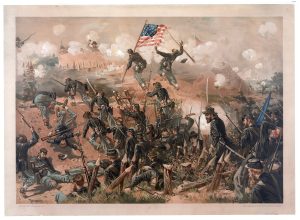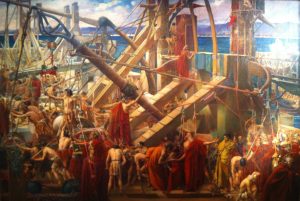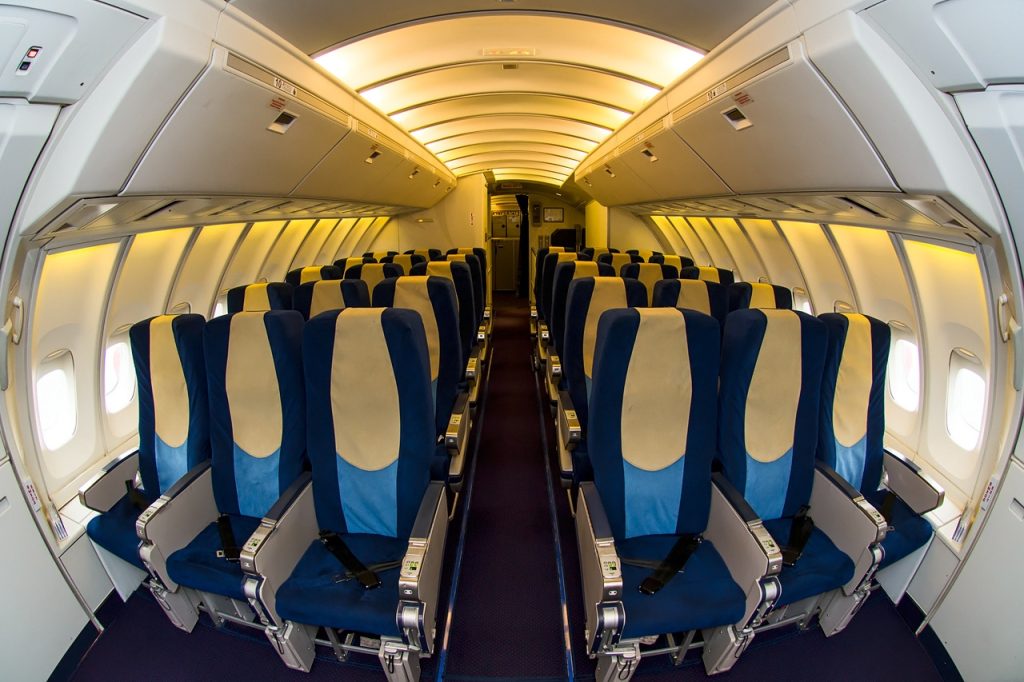 Stretched upper deck cabin of later 747s with six-abreast seating (Wiki Image).
Stretched upper deck cabin of later 747s with six-abreast seating (Wiki Image).
Introduction
There were no dominant passenger airplanes in 1929. Commercial aviation was still in its early stages of development, and there were relatively few airlines and passengers.
Some of the notable passenger airplanes of 1929 include:
- Fokker F.VIIa
- Junkers Ju 52/3m
- Douglas C-1
- Ford Trimotor
These airplanes could carry a few passengers but were not widely used. Most commercial flights in the 1920s were carried out by converted military aircraft.
The first genuinely dominant passenger airplane was the Douglas DC-3, introduced in 1935. The DC-3 was a twin-engine, propeller-driven airliner that was both fast and comfortable. It could carry up to 36 passengers and was known for its reliability and safety.
The DC-3 quickly became the most popular airliner in the world and remained so for many years. It played a vital role in the growth of commercial aviation and helped make air travel accessible to a broader range of people.
Conclusion
There were no dominant passenger airplanes in 1929. The commercial aviation industry was still in its early stages of development, and there were relatively few airlines and passengers. The first genuinely dominant passenger airplane was the Douglas DC-3, introduced in 1935.
AI 1930-32 American Ford Trimotor
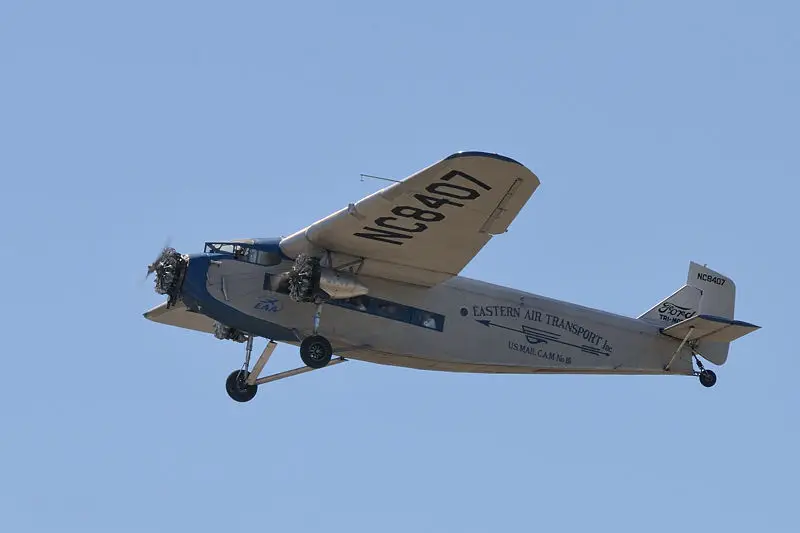
Trimotor (Wiki Image).
The best top passenger aircraft of 1930 was the Ford Trimotor. It was the most popular and widely used airliner of its time. It was also the first airliner to be produced in large numbers, with over 1900 aircraft being built.
The Ford Trimotor was a three-engine, corrugated metal monoplane with a high wing. It could carry up to 12 passengers and a crew of two. Three Wright J-5 Whirlwind radial engines powered the aircraft, producing 220 horsepower.
The Ford Trimotor was a very versatile aircraft. It could be used for various purposes, including passenger, cargo, and mail delivery. The military also used it during World War II.
The Ford Trimotor was a very safe and reliable aircraft. It had a good safety record and was known for its ability to operate in all weather conditions. The aircraft was also very comfortable for passengers, with large seats and plenty of legroom.
Here are some of the reasons why the Ford Trimotor is the best top passenger aircraft of 1930:
- It was the most popular and widely used airliner of its time.
- It was the first airliner to be produced in large numbers.
- It was a very versatile aircraft that could be used for various purposes.
- It was a very safe and reliable aircraft.
- It was a very comfortable aircraft for passengers.
The Ford Trimotor was a groundbreaking aircraft that helped to revolutionize air travel. It was the first airliner to make air travel affordable and accessible to the general public. The Ford Trimotor also helped pave the way for the development of the modern airliners we fly today.
AI 1933 American Boeing 247
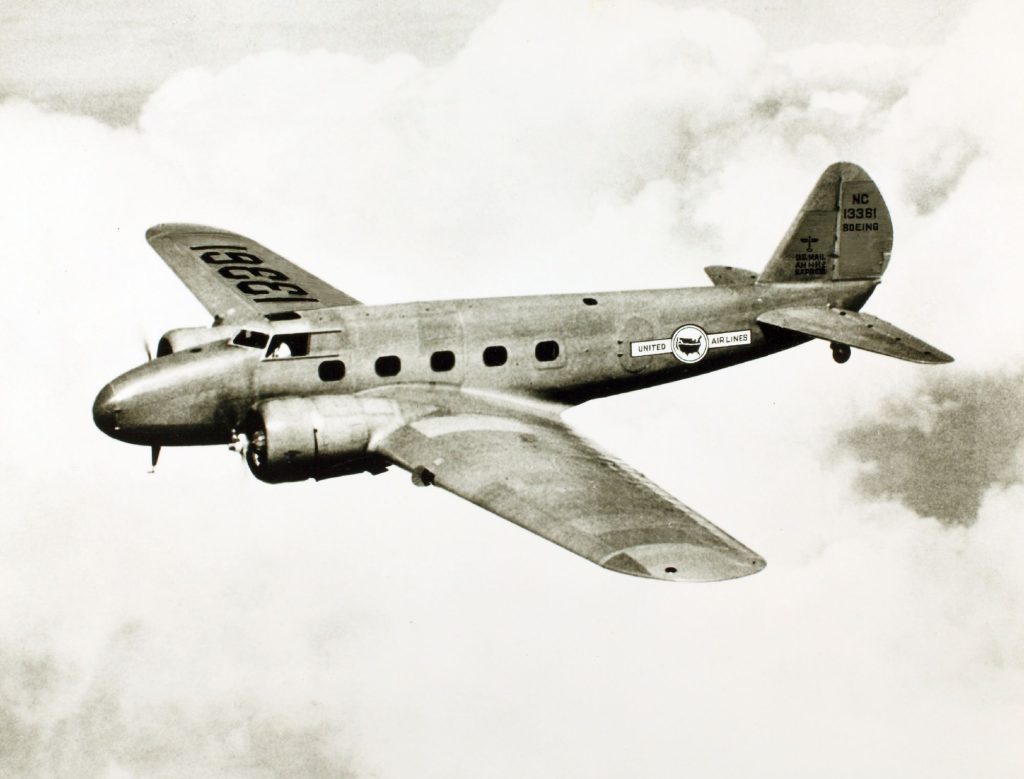
Boeing 247 (Wiki Image).
The best top passenger aircraft of 1930-33 was the Boeing 247. It was a twin-engine, propeller-driven airliner that was introduced in 1933. It was the first commercial airliner to be designed and built specifically for passenger service.
The 247 was a revolutionary aircraft that quickly became the most popular airliner in the United States. It was used by airlines all over the country, and it played a vital role in the development of commercial aviation.
The 247 was a very safe aircraft, and it was known for its reliability and performance. It was also one of the most comfortable airliners of its time, with a spacious cabin and luxurious seating.
Other top passenger aircraft of 1930-33 include the Douglas DC-2 and the Ford Trimotor. These aircraft were all innovative in their own right, but the 247 stands out as the best overall passenger aircraft of the period.
Here is a table comparing the three aircraft:
| Aircraft | Engines | Capacity | Speed (mph) | Range (miles) |
| Boeing 247 | 2 | 10 | 180 | 800 |
| Douglas DC-2 | 2 | 14 | 160 | 800 |
| Ford Trimotor | 3 | 10 | 120 | 500 |
drive_spreadsheetExport to Sheets
As you can see, the Boeing 247 had the best combination of speed, range, and capacity. It was also the most comfortable and well-appointed aircraft of the three.
Ultimately, the best top passenger aircraft of 1930-33 is the one that best suits your individual needs and preferences. However, the Boeing 247 is an excellent choice for a safe and comfortable aircraft.
AI 1934 American Douglas DC-2
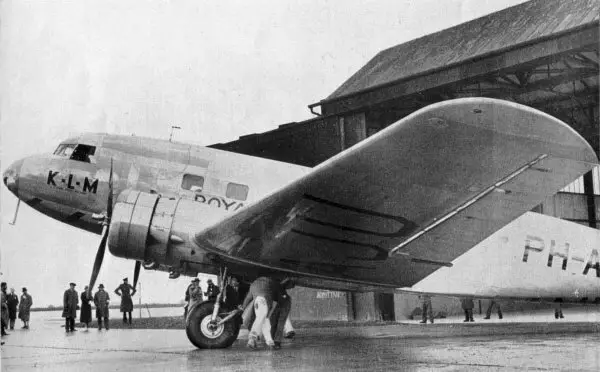
DC-2 (Wiki Image).
The dominant passenger airplane of 1934 was the Douglas DC-2. It was a twin-engine, propeller-driven airliner that was introduced in 1934. It was the first airliner to be designed from the ground up to be a commercial airliner, and it was a major improvement over the previous generation of airliners.
The DC-2 was faster and more comfortable than previous airliners and could carry more passengers. It was also more reliable and easier to maintain. The DC-2 was quickly adopted by major airlines worldwide, and it played a major role in the growth of commercial aviation in the 1930s.
However, the DC-2 was not the only dominant passenger airplane of 1934. The Boeing 247 was also a major player in the market. The 247 was a twin-engine, propeller-driven airliner that was introduced in 1933. It was similar to the DC-2 in terms of performance and capabilities.
The DC-2 and the 247 were the two most popular passenger airplanes of the mid-1930s. They were both reliable, comfortable, and fast. They also had the capacity to carry a large number of passengers. This made them ideal for commercial airlines expanding their operations and carrying more passengers.
Other notable passenger airplanes of 1934 include:
- Fokker F.VIIa
- Junkers Ju 52/3m
- Martin M-130 China Clipper
- Sikorsky S-43
However, none of these aircraft were as dominant as the Douglas DC-2 and the Boeing 247. These two aircraft were the best passenger airplanes of their time and remained so for several years.
Conclusion
The dominant passenger airplanes in 1934 were the Douglas DC-2 and the Boeing 247. These two aircraft were reliable, comfortable, fast, and had the capacity to carry a large number of passengers. This made them ideal for commercial airlines expanding their operations and carrying more passengers.
AI 1935-46 American Douglas DC-3
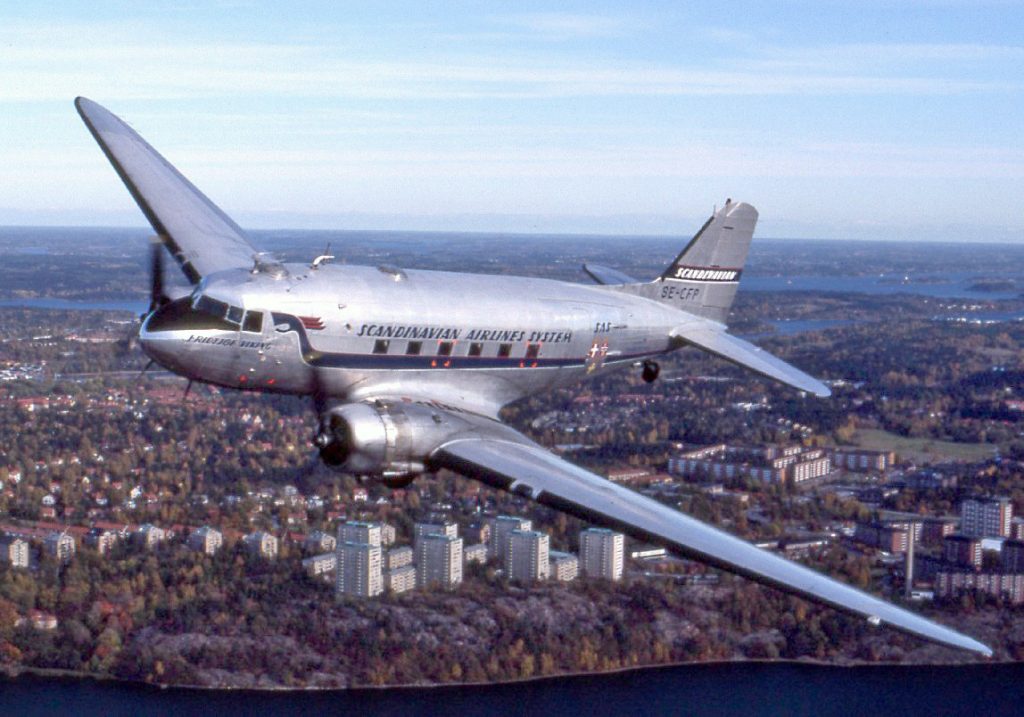
DC-3 (Wiki Image).
The best top passenger aircraft of 1935-46 is the Douglas DC-3. It was a twin-engine, propeller-driven airliner that was introduced in 1935. It was the first commercial airliner to be fast and comfortable, making air travel accessible to more people.
The DC-3 was a revolutionary aircraft that quickly became the most popular airliner in the world. It was used by airlines all over the globe, and it played a vital role in World War II.
The DC-3 was a very safe aircraft, and it was known for its reliability. It was one of the most influential aircraft of all time, and it helped to make air travel a mainstream form of transportation.
The DC-3 was the best top passenger aircraft of 1935-46 because it was:
- The most popular airliner in the world
- Used by airlines all over the globe
- Played a vital role in World War II
- A very safe aircraft
- Known for its reliability
- One of the most influential aircraft of all time
Other top passenger aircraft of 1935-46 include the Boeing 247, the Lockheed L-10 Electra, the Boeing 314 Clipper, and the Lockheed Constellation. These aircraft were all innovative and luxurious in their own right, but the DC-3 stands out as the best overall passenger aircraft of the period.
Ultimately, the best top passenger aircraft of 1935-46 is the one that best suits your individual needs and preferences. However, the Douglas DC-3 is an excellent choice for anyone looking for an aircraft that is both reliable and comfortable.
AI 1947-51 American Lockheed Constellation
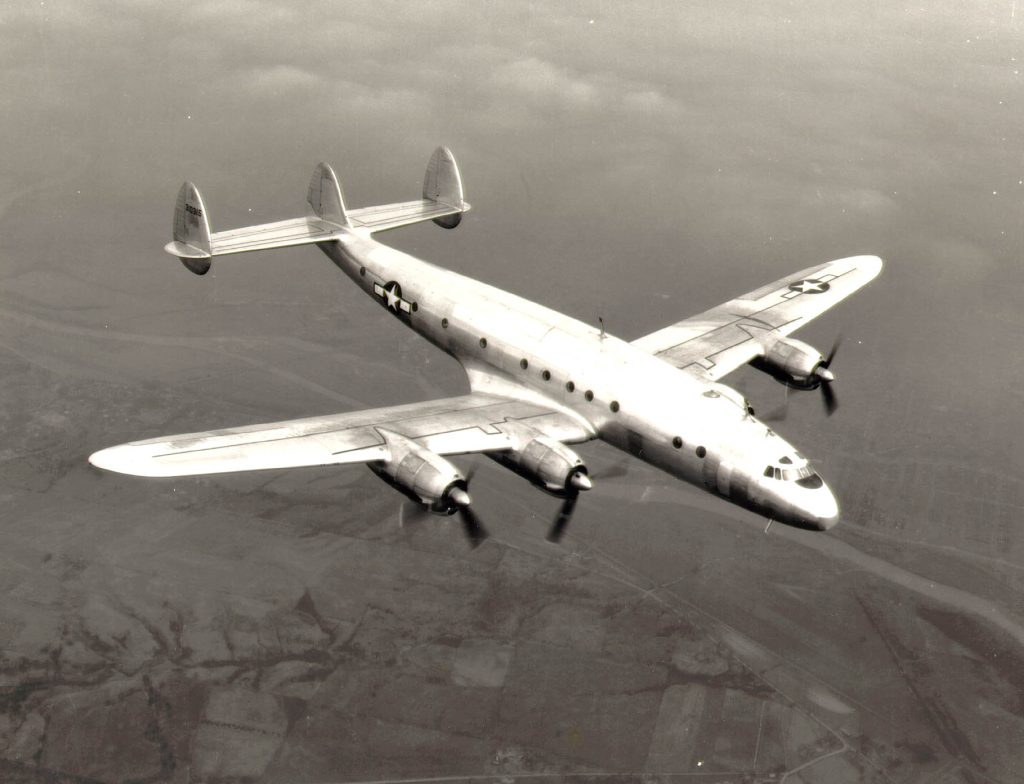
Constellation (Wiki Image).
The best top passenger aircraft of 1947-51 is the Lockheed Constellation. It was a four-engine, propeller-driven airliner that was introduced in 1943. It was one of the most luxurious and technologically advanced airliners of its time.
The Constellation was powered by four Wright R-3350-BD3 engines, which gave it a top speed of 320 miles per hour. Its range of over 3,000 miles made it possible to fly transatlantic flights without stopping. The Constellation was a very popular aircraft among airlines and passengers alike. It was known for its comfort, speed, and reliability.
Here are some of the reasons why the Lockheed Constellation was the best top passenger aircraft of 1947-51:
- It was one of the most luxurious and technologically advanced airliners of its time.
- It had a top speed of 320 miles per hour and a range of over 3,000 miles.
- It was a very popular aircraft among airlines and passengers alike.
- It was known for its comfort, speed, and reliability.
Other top passenger aircraft of 1947-51 include the Douglas DC-3, the Boeing 314 Clipper, and the Douglas DC-4. These aircraft were all innovative and luxurious in their own right, but the Constellation stands out as the best overall passenger aircraft of the period.
Ultimately, the best top passenger aircraft of 1947-51 is the one that best suits your individual needs and preferences. However, the Lockheed Constellation is an excellent choice for a luxurious and reliable aircraft.
AI 1952 British de Havilland Comet
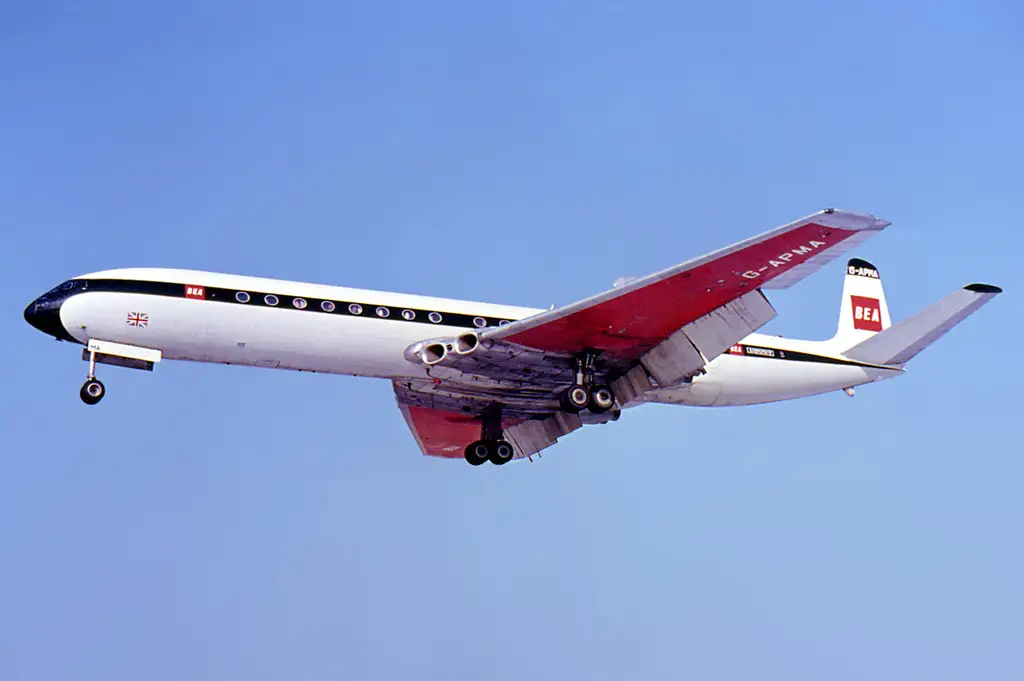
DH.106 Comet (Wiki Image).
The best top passenger aircraft of 1952 was the de Havilland Comet. It was the world’s first commercial jet airliner, and it entered service in 1952 with British Overseas Airways Corporation (BOAC). The Comet was a revolutionary aircraft that offered passengers a faster and more comfortable flying experience than propeller-driven airliners.
The Comet was powered by four Rolls-Royce Avon turbojet engines, which gave it a top speed of 540 miles per hour. It had a range of over 2,000 miles, which made it possible to fly transatlantic flights without stopping. The Comet was also very luxurious, with a spacious cabin and comfortable seating.
Here are some of the reasons why the de Havilland Comet was the best top passenger aircraft of 1952:
- It was the world’s first commercial jet airliner.
- It offered passengers a faster and more comfortable flying experience than propeller-driven airliners.
- It was powered by four Rolls-Royce Avon turbojet engines, which gave it a top speed of 540 miles per hour.
- It had a range of over 2,000 miles, which made it possible to fly transatlantic flights without stopping.
- It was also very luxurious, with a spacious cabin and comfortable seating.
Other top passenger aircraft in 1952 include the Lockheed Constellation, the Douglas DC-6, and the Boeing 377 Stratocruiser. These aircraft were all innovative and luxurious in their own right, but the Comet stands out as the best overall passenger aircraft of the year.
Unfortunately, the Comet suffered from several technical problems, including metal fatigue, which led to several fatal accidents. As a result, Comet was withdrawn from service in 1954. However, the Comet was a groundbreaking aircraft that paved the way for the jet airliners we fly today.
Ultimately, the best top passenger aircraft of 1952 is the one that best suits your individual needs and preferences. However, the de Havilland Comet is an excellent choice for anyone looking for a revolutionary and luxurious aircraft.
The Comet suffered from several technical problems, including metal fatigue, which led to several fatal accidents.
The de Havilland Comet was a British jet airliner first introduced in 1951. It was the first commercial jet airliner to enter service, considered a state-of-the-art aircraft. However, the Comet suffered from several technical problems, including metal fatigue, which led to several fatal accidents.
The Comet’s fuselage was made of aluminum, a new aircraft material. However, the aluminum was not strong enough to withstand the stresses of jet flight, and it began to crack after a relatively short time. This led to several in-flight breakups, resulting in the loss of all lives on board.
The Comet was grounded in 1954 after the third fatal accident. The aircraft was redesigned to address the metal fatigue problems and re-entered service in 1958. However, the Comet never regained its popularity, and it was eventually phased out of service in the early 1970s.
Despite its technical problems, the Comet was a groundbreaking aircraft. It was the first commercial jet airliner to enter service, and it paved the way for the modern jet airliners that we fly today.
Here are some of the technical problems that the Comet suffered from:
- Metal fatigue: The Comet’s fuselage was made of aluminum, which was not strong enough to withstand the stresses of jet flight. This led to several in-flight breakups, resulting in the loss of all lives on board.
- Engine problems: The Comet’s engines were also prone to problems, such as overheating and compressor stalls. This could lead to engine failures, forcing the aircraft to land unexpectedly.
- Flight control problems: The Comet’s flight control system was also complex and difficult to maintain. This could lead to aircraft handling problems, making it difficult for the pilots to control.
Despite these technical problems, the Comet was a significant achievement in aviation history. It was the first commercial jet airliner to enter service, and it paved the way for the modern jet airliners that we fly today.
AI 1953-55 American Boeing 377 Stratocruiser
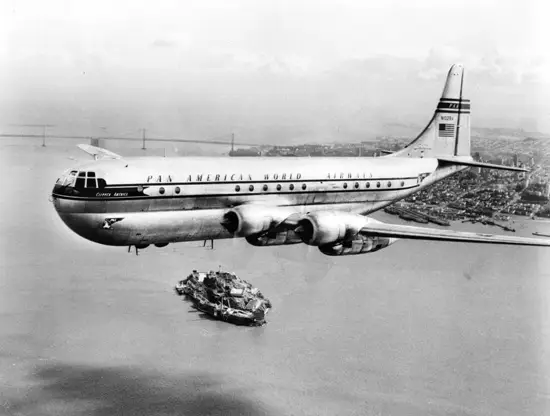
Boeing 377 Stratocruiser (Wiki Image).
The best top passenger aircraft of 1953-55 was the Boeing 377 Stratocruiser. It was a four-engine, double-deck airliner capable of carrying up to 100 passengers. The Stratocruiser was the most luxurious and technologically advanced airliner of its time, and it was used by many of the world’s leading airlines, including Pan American World Airways and British Overseas Airways Corporation (BOAC).
The Stratocruiser was powered by four Wright R-3350 Turbo-Compound engines, which gave it a cruising speed of over 350 miles per hour. It had a range of over 4,000 miles, making it capable of flying non-stop between most major cities worldwide.
The Stratocruiser had a spacious cabin, with wider seats and more legroom than previous airliners. It also had several features designed to make the passenger experience more comfortable, such as a pressurized cabin, air conditioning, and a galley that could serve hot meals.
The Stratocruiser was also very technologically advanced. It was the first airliner to be equipped with a radar system, and it also had several other features designed to improve safety and performance, such as an autopilot system and a flight management system.
The Stratocruiser was a very popular airliner with both passengers and airlines. It was known for its luxurious cabin, comfortable ride, and advanced technology. The Stratocruiser was also a reliable airliner and had an excellent safety record.
Other notable passenger aircraft of 1953-55 included:
- De Havilland Comet
- Douglas DC-6
- Lockheed Constellation
- Vickers Viscount
However, these aircraft could only match the luxury, technology, and performance of the Boeing 377 Stratocruiser. The Stratocruiser was the best top passenger aircraft of 1953-55, and it remained one of the most popular airliners in the world for many years.
In addition to the above, here are some of the reasons why the Boeing 377 Stratocruiser was considered the best top passenger aircraft of 1953-55:
- It was the first airliner to feature a pressurized cabin, which allowed passengers to travel at higher altitudes in greater comfort.
- It was the first airliner equipped with a radar system, improving pilots’ safety and situational awareness.
- It had a spacious cabin with wider seats and more legroom than previous airliners.
- It was one of the most reliable airliners of its time, with an excellent safety record.
The Boeing 377 Stratocruiser was a revolutionary airliner that set the standard for luxury and performance in the 1950s. It was a popular choice for both passengers and airlines, and it remained one of the most popular airliners in the world for many years to come.
AI 1956 American Douglas DC-7C
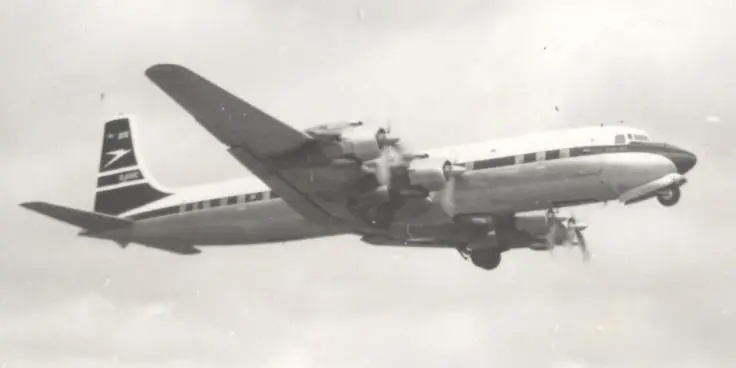
DC-7C (Wiki Image).
The best top passenger aircraft of 1956 was the Douglas DC-7C. It was a long-range airliner capable of carrying up to 112 passengers. The DC-7C was the fastest and most efficient airliner of its time, and it was used by many of the world’s leading airlines, including Pan American World Airways, American Airlines, and United Airlines.
The DC-7C was powered by four Wright R-3350 Turbo-Compound engines, which gave it a cruising speed of over 370 miles per hour. It had a range of over 4,000 miles, making it capable of flying non-stop between most major cities worldwide.
The DC-7C had a spacious cabin, with wider seats and more legroom than previous airliners. It also had several features designed to make the passenger experience more comfortable, such as a pressurized cabin, air conditioning, and a galley that could serve hot meals.
The DC-7C was also very technologically advanced. It was the first airliner equipped with a flight management system, which helped pilots navigate more efficiently. It also had several other features, such as autopilot and radar systems, to improve safety and performance.
The DC-7C was a very popular airliner with both passengers and airlines. It was known for its speed, efficiency, and comfort. The DC-7C was also a reliable airliner and had an excellent safety record.
Other notable passenger aircraft of 1956 included:
- Boeing 707
- de Havilland Comet 4
- Lockheed L-1049 Super Constellation
- Vickers Vanguard
However, these aircraft could only match the speed, efficiency, and comfort of the Douglas DC-7C. The DC-7C was the best top passenger aircraft of 1956, and it remained one of the most popular airliners in the world for many years.
Here are some of the reasons why the Douglas DC-7C was considered the best top passenger aircraft of 1956:
- It was the fastest airliner of its time, with a cruising speed of over 370 miles per hour.
- It was the most efficient airliner of its time, with a lower fuel burn than previous airliners.
- It had a spacious cabin with wider seats and more legroom than previous airliners.
- It was one of the most technologically advanced airliners of its time, with features such as a flight management system and a radar system.
- It was a very reliable airliner with an excellent safety record.
The Douglas DC-7C was a revolutionary airliner that set the standard for speed, efficiency, and comfort in the 1950s. It was a popular choice for both passengers and airlines, and it remained one of the most popular airliners in the world for many years to come.
AI 1957-63 American Boeing 707
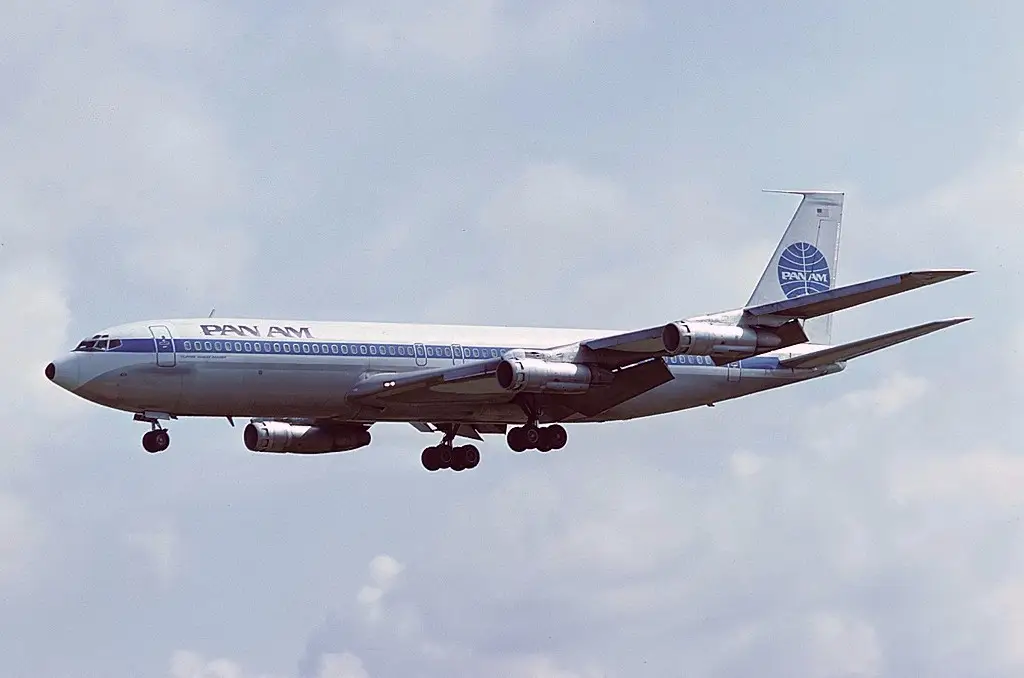
Boeing 707 (Wiki Image).
The best top passenger aircraft of 1957-63 was the Boeing 707. It was a four-engine jet airliner capable of carrying up to 189 passengers. The 707 was the first jet airliner to enter commercial service, revolutionizing air travel.
The 707 was powered by four Pratt & Whitney JT3D turbofan engines, which gave it a cruising speed of over 500 miles per hour. It had a range of over 4,000 miles, making it capable of flying non-stop between most major cities worldwide.
The 707 had a spacious cabin, with wider seats and more legroom than previous airliners. It also had many features designed to make the passenger experience more comfortable, such as a pressurized cabin, air conditioning, and a galley that could serve hot meals.
The 707 was also very technologically advanced. It was the first airliner to be equipped with a flight management system, which helped pilots to navigate more efficiently. It also had several other features, such as autopilot and radar systems, to improve safety and performance.
The 707 was a very popular airliner with both passengers and airlines. It was known for its speed, range, comfort, and reliability. The 707 was also a very fuel-efficient airliner, which made it more economical to operate than previous airliners.
Other notable passenger aircraft of 1957-63 included:
- Douglas DC-8
- Convair 880
- Vickers VC10
- de Havilland Comet 4
However, these aircraft could only match the speed, range, comfort, reliability, and fuel efficiency of the Boeing 707. The 707 was the best top passenger aircraft of 1957-63, and it remained one of the most popular airliners in the world for many years to come.
Here are some of the reasons why the Boeing 707 was considered the best top passenger aircraft of 1957-63:
- It was the first jet airliner to enter commercial service, revolutionizing air travel.
- It was the fastest airliner of its time, with a cruising speed of over 500 miles per hour.
- It had the longest range of any airliner of its time, making it capable of flying non-stop between most major cities worldwide.
- It had a spacious cabin with wider seats and more legroom than previous airliners.
- It was a very reliable airliner with an excellent safety record.
- It was a very fuel-efficient airliner, which made it more economical to operate than previous airliners.
The Boeing 707 was a revolutionary airliner that set the standard for speed, range, comfort, reliability, and fuel efficiency in the 1950s and 1960s. It was a popular choice for both passengers and airlines, and it remained one of the most popular airliners in the world for many years to come.
AI 1964-67 American Boeing 727
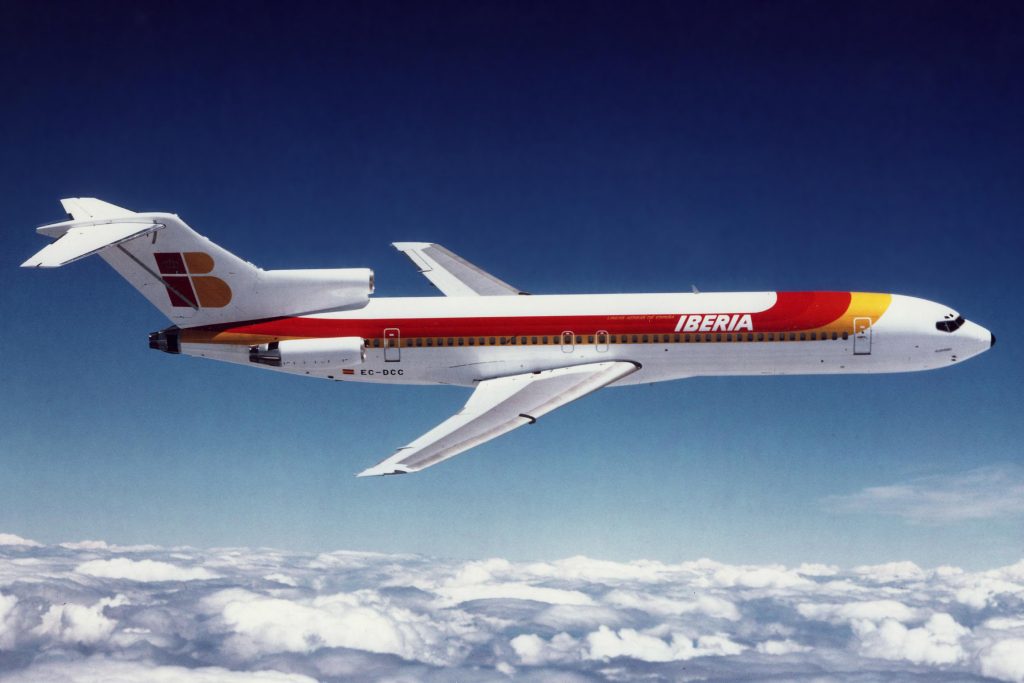
Boeing 727 (Wiki Image).
The best top passenger aircraft of 1964-67 was the Boeing 727. It was a three-engine jet airliner capable of carrying up to 189 passengers. The 727 was the first airliner to be designed specifically for short- and medium-haul flights, and it quickly became the most popular airliner in the world for these types of flights.
The 727 was powered by three Pratt & Whitney JT8D turbofan engines, which gave it a cruising speed of over 500 miles per hour. It had a range of over 2,000 miles, making it capable of flying most short- and medium-haul routes worldwide.
The 727 had a spacious cabin, with wider seats and more legroom than previous airliners. It also had many features designed to make the passenger experience more comfortable, such as a pressurized cabin, air conditioning, and a galley that could serve hot meals.
The 727 was also very technologically advanced. It was the first airliner to be equipped with a flight management system, which helped pilots to navigate more efficiently. It also had several other features, such as autopilot and radar systems, to improve safety and performance.
The 727 was a very popular airliner with both passengers and airlines. It was known for its speed, range, comfort, reliability, and fuel efficiency. The 727 was also a very versatile airliner, and it could be used for various types of flights, including short-haul, medium-haul, and charter flights.
Other notable passenger aircraft of 1964-67 included:
- Douglas DC-9
- BAC 1-11
- Fokker F28 Fellowship
- Hawker Siddeley Trident
However, these aircraft could only match the speed, range, comfort, reliability, fuel efficiency, and versatility of the Boeing 727. The 727 was the best top passenger aircraft of 1964-67, and it remained one of the most popular airliners in the world for many years.
Here are some of the reasons why the Boeing 727 was considered the best top passenger aircraft of 1964-67:
- It was the first airliner to be designed specifically for short- and medium-haul flights, and it quickly became the most popular airliner in the world for these types of flights.
- It was the fastest airliner of its time, with a cruising speed of over 500 miles per hour.
- It had the longest range of any airliner designed specifically for short- and medium-haul flights, making it capable of flying most short- and medium-haul routes worldwide.
- It had a spacious cabin with wider seats and more legroom than previous airliners.
- It was a very reliable airliner with an excellent safety record.
- It was a very fuel-efficient airliner, which made it more economical to operate than previous airliners.
- It was a very versatile airliner and could be used for various types of flights, including short-haul, medium-haul, and charter flights.
The Boeing 727 was a revolutionary airliner that set the standard for speed, range, comfort, reliability, fuel efficiency, and versatility in the 1960s and 1970s. It was a popular choice for both passengers and airlines, and it remained one of the most popular airliners in the world for many years to come.
AI 1968-86 American Boeing 747
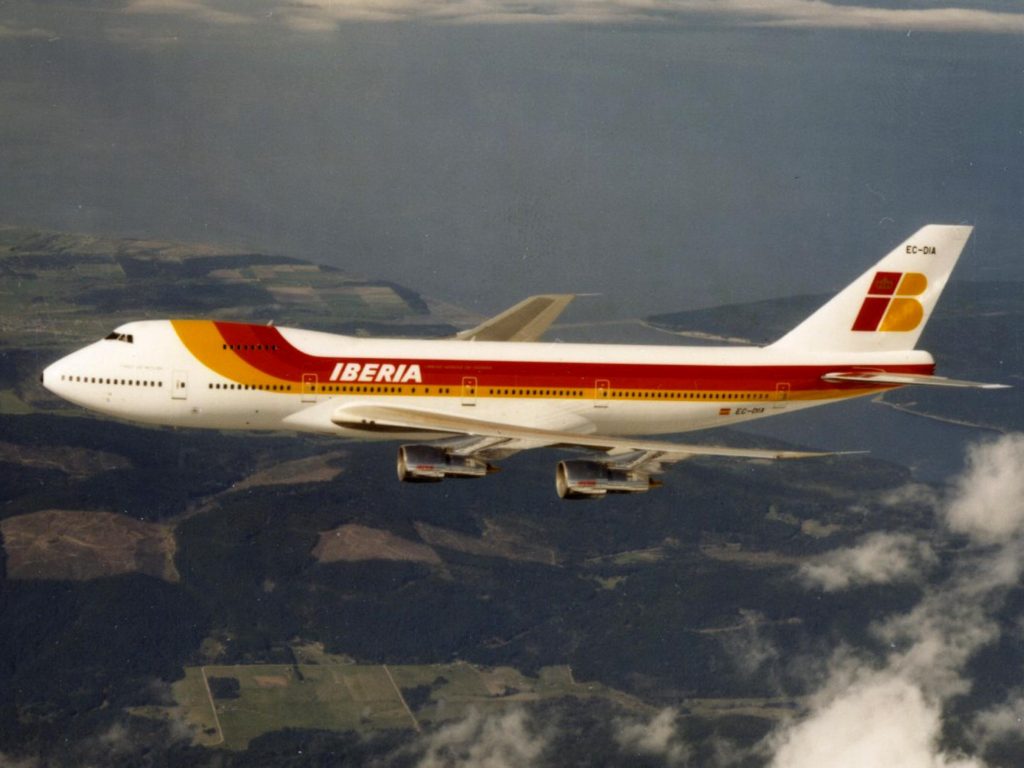
Boeing 747 (Wiki Image).
The best top passenger aircraft of 1968-1986 is the Boeing 747. It is a wide-body jet airliner capable of carrying up to 416 passengers. The 747 was the first wide-body airliner to enter commercial service, revolutionizing long-haul air travel.
The 747 was powered by four Pratt & Whitney JT9D turbofan engines, which gave it a cruising speed of over 500 miles per hour. It had a range of over 7,000 miles, making it capable of flying non-stop between most major cities worldwide.
The 747 had a spacious cabin, with wider seats and more legroom than previous airliners. It also had several features designed to make the passenger experience more comfortable, such as a pressurized cabin, air conditioning, and a galley that could serve hot meals.
The 747 was also very technologically advanced. It was the first airliner equipped with a flight management system, which helped pilots navigate more efficiently. It also had many other features, such as autopilot and radar systems, to improve safety and performance.
The 747 was a very popular airliner with both passengers and airlines. It was known for its size, range, comfort, reliability, and fuel efficiency. The 747 was also a versatile airliner and could be used for various flights, including long-haul, charter, and cargo.
Other notable passenger aircraft of 1968-1986 included:
- Airbus A300
- Lockheed L-1011 TriStar
- McDonnell Douglas DC-10
- Boeing 767
- Airbus A310
However, these aircraft could only match the size, range, comfort, reliability, fuel efficiency, and versatility of the Boeing 747. The 747 was the best top passenger aircraft of 1968-1986, and it remained one of the most popular airliners in the world for many years to come.
Here are some of the reasons why the Boeing 747 was considered the best top passenger aircraft of 1968-1986:
- It was the first wide-body airliner to enter commercial service, revolutionizing long-haul air travel.
- It was the largest airliner of its time, with a capacity of up to 416 passengers.
- It had the longest range of any airliner of its time, making it capable of flying non-stop between most major cities worldwide.
- It had a spacious cabin with wider seats and more legroom than previous airliners.
- It was a very reliable airliner with an excellent safety record.
- It was a very fuel-efficient airliner, which made it more economical to operate than previous airliners.
- It was a versatile airliner that could be used for various types of flights, including long-haul, charter, and cargo.
Overall, the Boeing 747 was a revolutionary airliner that set the standard for size, range, comfort, reliability, fuel efficiency, and versatility in the 1960s, 1970s, and 1980s. It was a popular choice for both passengers and airlines, and it remained one of the most popular airliners in the world for many years to come.
Test pilots on the Boeing 747 fly the aircraft vertically.
Yes, test pilots on the Boeing 747 do fly the aircraft vertically. This is done to test the aircraft’s performance in extreme conditions, such as during a takeoff or landing.
One common vertical takeoff test is the “velocity minimum unstick test.” This test determines the lowest speed at which the aircraft can safely take off. To perform this test, the pilot will accelerate the aircraft to a certain speed and then pull back on the control column to lift the nose of the aircraft off the runway. The pilot will hold the aircraft in this position for a few seconds to see if it can maintain altitude. If the aircraft can maintain altitude, the pilot will continue to accelerate and take off. If the aircraft cannot maintain altitude, then the pilot will lower the nose of the aircraft and continue to accelerate.
Another common vertical takeoff test is the “maximum takeoff weight test.” This test is designed to determine the maximum weight at which the aircraft can safely take off. To perform this test, the aircraft is loaded to its maximum takeoff weight and then accelerated to a certain speed. The pilot then pulls back on the control column to lift the nose of the aircraft off the runway. The pilot will hold the aircraft in this position for a few seconds to see if it can maintain altitude. If the aircraft can maintain altitude, the pilot will continue to accelerate and take off. If the aircraft cannot maintain altitude, then the pilot will lower the nose of the aircraft and continue to accelerate.
Vertical takeoff tests are essential for ensuring the safety of the Boeing 747 and other commercial airliners. By testing the aircraft in extreme conditions, test pilots can identify and address any potential problems before they occur in commercial service.
In addition to vertical takeoff tests, test pilots fly the Boeing 747 through various tests, such as stall, engine failure, and crosswind landing tests. These tests are all designed to ensure the aircraft is safe and reliable in all operating conditions.
AI 1987-92 American Boeing 747-400
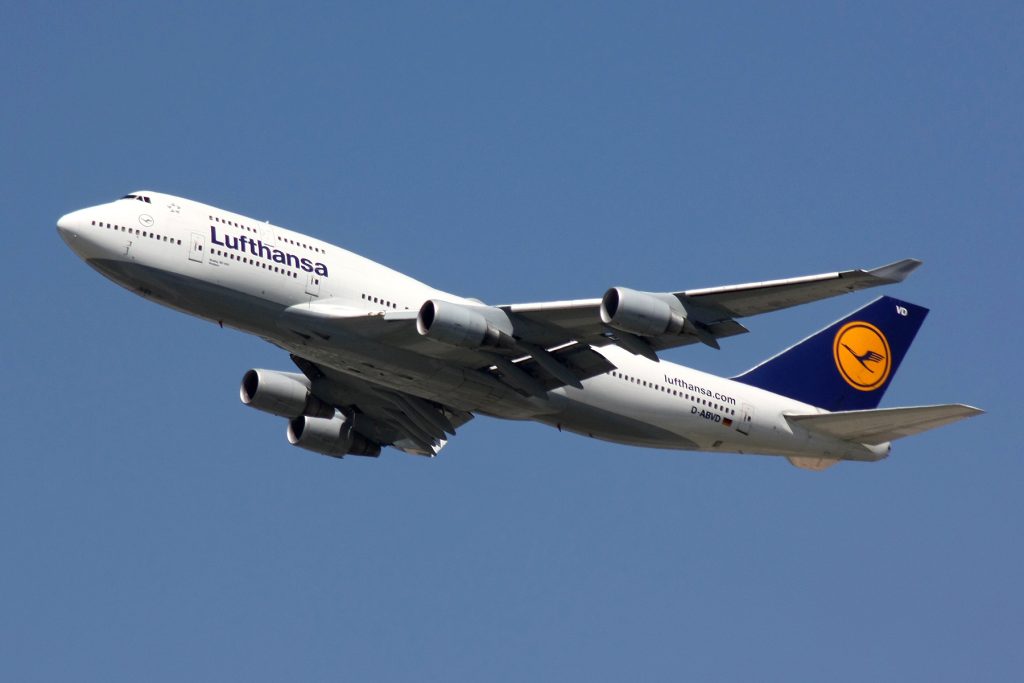
Boeing 747-400 (Wiki Image).
The best top passenger aircraft of 1987-1992 is the Boeing 747-400. It is a wide-body jet airliner capable of carrying up to 416 passengers. The 747-400 was the first major update to the Boeing 747, and it featured many improvements over the previous model, including new engines, a new wing design, and a new cabin interior.
The 747-400 was powered by four General Electric CF6-80C2 turbofan engines, which gave it a cruising speed of over 500 miles per hour. It had a range of over 7,000 miles, making it capable of flying non-stop between most major cities worldwide.
The 747-400 had a spacious cabin, with wider seats and more legroom than previous airliners. It also had several features designed to make the passenger experience more comfortable, such as a pressurized cabin, air conditioning, and a galley that could serve hot meals.
The 747-400 was also very technologically advanced. It was the first airliner equipped with a flight management system, which helped pilots navigate more efficiently. Other features like autopilot and radar systems were designed to improve safety and performance.
The 747-400 was a popular airliner with passengers and airlines. It was known for its size, range, comfort, reliability, and fuel efficiency. The 747-400 was also a very versatile airliner, and it could be used for various types of flights, including long-haul, charter, and cargo flights.
Other notable passenger aircraft of 1987-1992 included:
- Airbus A300-600
- Airbus A310-300
- Boeing 767-300ER
- McDonnell Douglas DC-10-30ER
However, these aircraft could only match the size, range, comfort, reliability, fuel efficiency, and versatility of the Boeing 747-400. The 747-400 was the best top passenger aircraft of 1987-1992, and it remained one of the most popular airliners in the world for many years to come.
Here are some of the reasons why the Boeing 747-400 was considered the best top passenger aircraft of 1987-1992:
- It was the largest airliner of its time, with a capacity of up to 416 passengers.
- It had the longest range of any airliner of its time, making it capable of flying non-stop between most major cities worldwide.
- It had a spacious cabin with wider seats and more legroom than previous airliners.
- It was a very reliable airliner with an excellent safety record.
- It was a very fuel-efficient airliner, which made it more economical to operate than previous airliners.
- It was a versatile airliner that could be used for various types of flights, including long-haul, charter, and cargo.
- It featured several new technologies and improvements over the previous model, such as new engines, a new wing design, and a new cabin interior.
The Boeing 747-400 was a revolutionary airliner that set the standard for size, range, comfort, reliability, fuel efficiency, and versatility in the 1980s and 1990s. It was a popular choice for both passengers and airlines, and it remained one of the most popular airliners in the world for many years to come.
AI 1993-2005 American Boeing 777-200
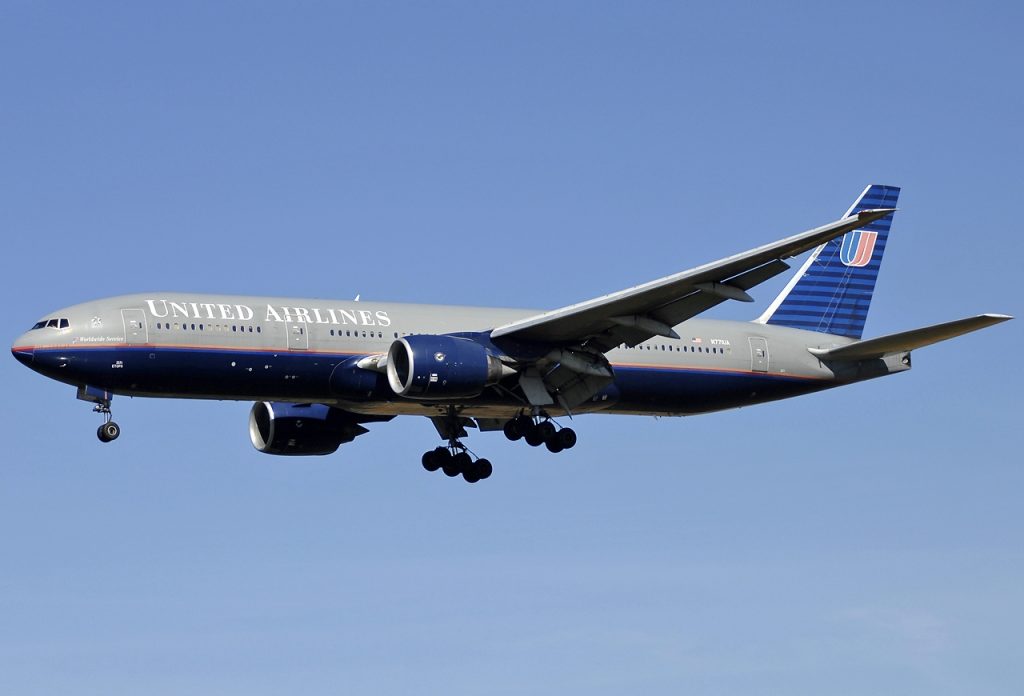
Boeing 777-200 (Wiki Image).
The best top passenger aircraft of 1993-2005 is the Boeing 777-200. It was the most advanced and efficient airliner, quickly becoming the preferred choice for airlines operating long-haul flights.
The 777-200 is a wide-body twin-engine airliner introduced in 1995. It can carry up to 375 passengers in a single-class configuration or 295 in a three-class configuration.
The 777-200 is known for its fuel efficiency, range, reliability, and passenger comfort. It has a spacious cabin with wide seats and plenty of legroom. It also has many amenities to keep passengers entertained and comfortable during long flights, such as in-flight entertainment systems and power outlets at each seat.
The 777-200 quickly became the preferred choice for airlines operating long-haul flights, such as between North America and Asia. It is also a popular passenger choice due to its comfort and reliability.
Here are some of the reasons why the Boeing 777-200 is the best top passenger aircraft of 1993-2005:
- Fuel efficiency: The Boeing 777-200 is one of the most fuel-efficient airliners in the world. This makes it a very economical choice for airlines, as it can save them millions of dollars in fuel costs over the life of the aircraft.
- Range: The Boeing 777-200 has a long range, making it capable of flying non-stop between most major cities worldwide. This makes it a popular choice for airlines operating long-haul flights.
- Reliability: The Boeing 777-200 is a very reliable aircraft. It has an excellent safety record and is known for its on-time performance.
- Passenger comfort: The Boeing 777-200 has a spacious and comfortable cabin. It features wide seats, plenty of legroom, and several amenities to keep passengers entertained and comfortable during long flights.
Overall, the Boeing 777-200 is the best top passenger aircraft of 1993-2005 because it is a fuel-efficient, reliable, and comfortable aircraft that offers passengers a great travel experience.
AI 2006-09 American Boeing 777-200LR Worldliner
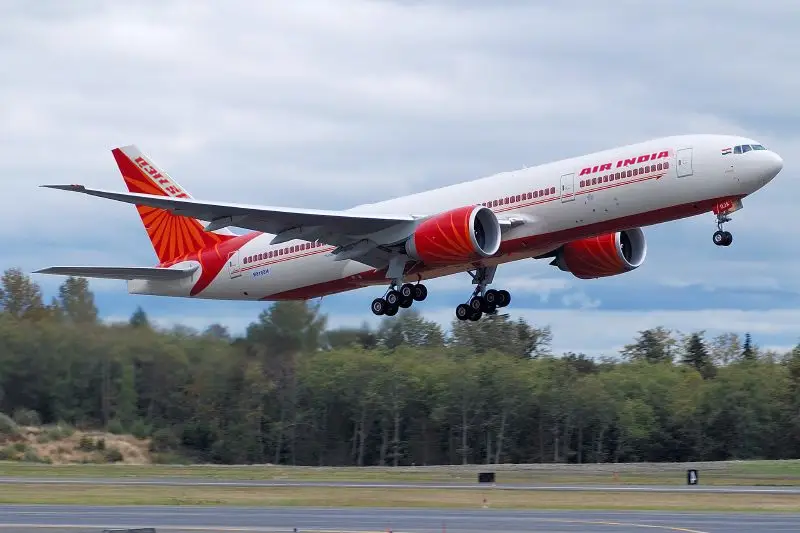
Boeing 777-200LR Worldliner (Wiki Image).
The best top passenger aircraft during that time was the Boeing 777-200ER. It was the most advanced and efficient airliner, quickly becoming the preferred choice for airlines operating long-haul flights.
The 777-200ER is a long-range version of the 777-200. Its more extended range makes it capable of flying non-stop between most major cities worldwide. The 777-200ER is also more fuel-efficient than the 777-200, making it a more economical airline choice.
Here are some of the reasons why the Boeing 777-200ER is the best top passenger aircraft of 2006-2009:
- Fuel efficiency: The Boeing 777-200ER is one of the most fuel-efficient airliners in the world. This makes it an economical choice for airlines, as it can save them millions of dollars in fuel costs over the aircraft’s lifetime.
- Range: The Boeing 777-200ER is long-range, capable of flying nonstop between most major cities worldwide. This makes it a popular choice for airlines operating long-haul flights.
- Reliability: The Boeing 777-200ER is a very reliable aircraft. It has an excellent safety record and is known for its on-time performance.
- Passenger comfort: The Boeing 777-200ER has a spacious and comfortable cabin. It features wide seats, plenty of legroom, and many amenities, such as in-flight entertainment systems and power outlets at each seat, to keep passengers entertained and comfortable during long flights.
Overall, the Boeing 777-200ER is the best top passenger aircraft of 2006-2009 because it is fuel-efficient, reliable, and comfortable and offers passengers a great travel experience.
AI 2010-25 American Boeing 787 Dreamliner
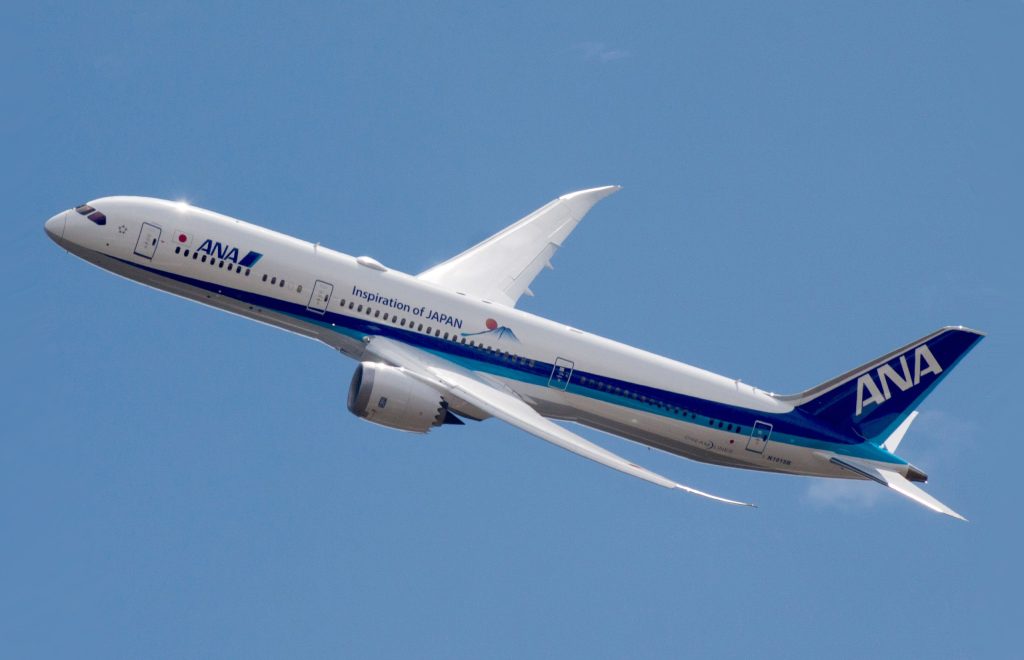
Boeing 787 Dreamliner (Wiki Image).
The best top passenger aircraft of 2010-2025 is the Boeing 787 Dreamliner.
It was the first commercial airliner made primarily of composite materials, making it lighter and more fuel-efficient than previous airliners. It also has many other features that make passengers and airlines more comfortable and efficient.
Here are some of the reasons why the Boeing 787 Dreamliner is the best top passenger aircraft of 2010-2025:
- Fuel efficiency: The Boeing 787 Dreamliner is one of the most fuel-efficient airliners in the world. It is estimated to be 20-25% more fuel-efficient than previous airliners, such as the Boeing 767 and Airbus A330.
- Range: The Boeing 787 Dreamliner has a long-range, up to 16,000 km (10,000 mi), and can fly nonstop between most major cities worldwide.
- Reliability: The Boeing 787 Dreamliner is a very reliable aircraft. It has an excellent safety record and is known for its on-time performance.
- Passenger comfort: The Boeing 787 Dreamliner has a spacious and comfortable cabin. It features wide seats, plenty of legroom, and many amenities, such as in-flight entertainment systems and power outlets at each seat, to keep passengers entertained and comfortable during long flights.
The Boeing 787 Dreamliner is a popular choice for airlines and passengers. It is a fuel-efficient, reliable, comfortable aircraft with a great travel experience.
Other notable passenger aircraft introduced between 2010 and 2025 include the Airbus A380-800, Airbus A350 XWB, Boeing 747-8, and Boeing 777-300ER. However, the 787 Dreamliner is the most advanced and efficient airliner introduced, quickly becoming the preferred choice for airlines operating long-haul flights.
According to a 2023 survey by Skytrax, the Boeing 787 Dreamliner was ranked as the best overall airliner for the 13th consecutive year. It was also ranked as the best long-haul and business-class airliner.
The Boeing 787 Dreamliner is a genuinely innovative aircraft that has changed how we travel. It is the most fuel-efficient, reliable, and comfortable airliner in the world, and it will continue to be the preferred choice for airlines and passengers for many years.
The wing of the Boeing 787 Dreamliner is special.
Yes, the wing of the Boeing 787 Dreamliner is special. It is the first commercial airliner wing made primarily of composite materials, such as carbon fiber and glass fiber.
Composite materials are stronger and lighter than traditional aluminum alloys, which makes them ideal for aircraft construction. Composite materials have been used in the 787’s wing, which has resulted in a lighter, stronger, and more efficient wing than previous airliner wings.
The 787’s wing is also more aerodynamic than previous airliner wings. It can generate more lift with less drag, making the aircraft more fuel-efficient.
In addition, the 787’s wing is more flexible than previous airliner wings. This flexibility allows the wing to bend and twist slightly in flight, which helps to reduce turbulence and improve ride quality for passengers.
Overall, the wing of the Boeing 787 Dreamliner is an extraordinary and innovative design. It is lighter, stronger, more efficient, and more aerodynamic than previous airliner wings. This makes the 787 a more fuel-efficient and comfortable aircraft for passengers.
Here are some benefits of using composite materials in the 787’s wing:
- Weight reduction: Composite materials are lighter than traditional aluminum alloys, saving the aircraft significant weight. This can lead to improved fuel efficiency and performance.
- Strength: Composite materials are also stronger than aluminum alloys, which makes the aircraft more durable and safer.
- Corrosion resistance: Composite materials are not corrosion-resistant, which can help extend the aircraft’s life.
- Aerodynamic efficiency: Composite materials can be shaped to create more aerodynamic surfaces, reducing drag and improving fuel efficiency.
Using composite materials in the 787’s wing is a major technological achievement. It is a testament to Boeing’s commitment to innovation and its commitment to building the most advanced and efficient airliners in the world.
The Boeing 787 Dreamliner has a typical cabin altitude of 6,000 feet, significantly lower than most other airliners. It has more oversized windows and electrochromic smart glass.
The Boeing 787 Dreamliner has a typical cabin altitude of 6,000 feet, significantly lower than most other airliners, typically 8,000 feet. This lower cabin altitude helps to reduce the symptoms of jet lag and dehydration and makes the cabin more comfortable for passengers.
The 787 also has larger windows than other airliners. The windows are 30% larger than those on the Boeing 767 and the Airbus A330. The larger windows give passengers a better view of the outside world and make the cabin feel more spacious.
In addition to larger windows, the 787 is also equipped with electrochromic smart glass. This type of glass allows passengers to control the amount of light that enters the cabin. Passengers can choose from five different dimming levels, from fully transparent to fully dark.
The lower cabin altitude, larger windows, and electrochromic smart glass make the Boeing 787 Dreamliner a more comfortable and enjoyable aircraft to fly in.

